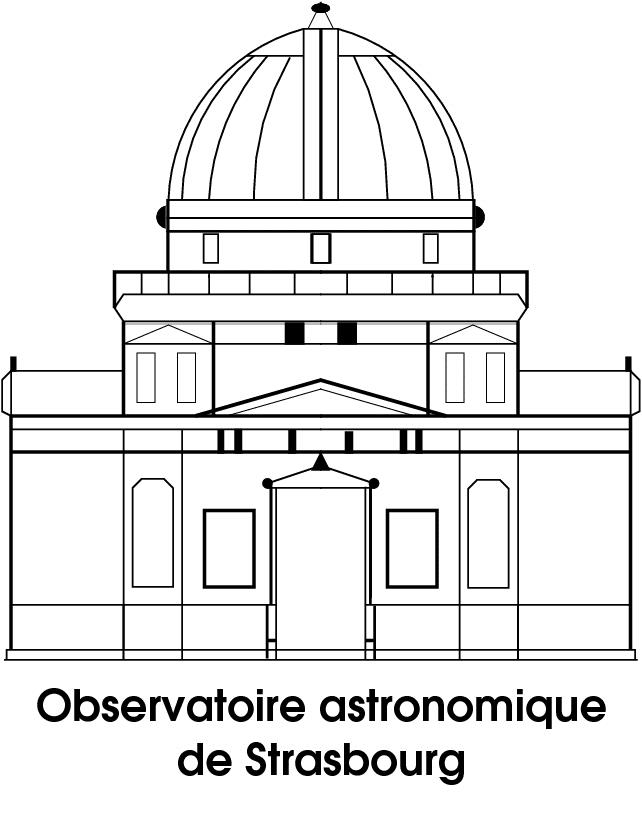The scientific payload
The SVOM mission will operate a set of four instruments in space that
constitute the scientific payload of the satellite.

ECLAIRs is a 2D-coded mask
imager sensitive from 4 to 250 keV, with a field of view of 80°x 80° and
a localization accuracy better than 10', at 7 s. It will deliver
triggers by seeking continuously for the appearance of new transient
sources in the hard X-ray energy domain, and by determining their
localization on the sky. When a new source candidate is detected, an
alert will be automatically transmitted to the satellite and to the
ground within 1 minute via a VHF network.

Gamma-Ray Monitor is a set of
two gamma-ray spectro-photometers sensitive in the range 50 keV to 5
MeV. It will cover the same FoV than ECLAIRs and provide a measurement
of the peak energy, E-peak.
X-ray Imager for Afterglow Observations
is a micro-channel X-ray telescope operating from 0.3 to 7 keV, with
a FOV of 1.1° and a localization accuracy better than 20'', at 5 s.
It will reach a sensitivity of about 5-10 mCrab in 10 ks, at 5 s. It
will provide an intermediate step between the first localizations at
several arcminutes given by Eclairs and the precise localizations that
can be achieved with an optical telescope. The refined position will be
also transmitted via the alert network.
Visible Telescope is a 45 cm
visible telescope operating from 400 to 950 nm, with a FOV of 21'x21'.
It will reach a sensitivity of about 23 magnitudes, in the R band, in a
300 s exposure time, at 5 s.
Scientific performances
The SVOM mission offers a very attractive combination of instruments.
The burst observation rate for the Eclairs instrument is estimated to
about 80 per year for a 7 s level detection, with about 20 % of the
events at a redshift larger than 6. Despite its smaller effective
surface than the Burst Alert Telescope of Swift, ECLAIRs holds greater
potential for the discovery of highly redshifted and faint gamma-ray
bursts thanks to a low-energy threshold of 4 keV. Simultaneously, the
GRM will be able to provide systematically a precise estimation of the
peak energy parameter and the GWACs an observation of the prompt
emission in the visible domain.
After an automatic satellite slew maneuver lasting
less than 5 minutes, MXT, with a sensitivity close to the Swift X-Ray
Telescope, and the VT, with a sensitivity significantly improved over
the Swift UVOT, completed by the two GFTs on ground, will insure a
systematic multi-wavelength follow-up for several hours. In particular
the VT will allow the detection of nearly 75 % of GRBs in the visible
domain, during the first orbit and, for the first time, to explore the
realm of ``dark GRBs''. All these instruments are included in a chain
allowing a refinement of the localization, from few arcminutes to
sub-arcsecondes. All these alerts will be distributed to the scientific
community in real time through the GCN alert network.
A significant fraction of the time will be also
available for non-GRB science like the discovery or the follow-up of
cataclysmic variables, active stars, active galactic nuclei,
supernovae, ... It will be possible to propose a program consisting in
an observation of a given target for typically few consecutive orbits
(programs maximizing the simultaneous use of several instruments will
be always favored). Such a program will have always a lower priority
than the GRB core program: the capabilities to detect a GRB must not be
affected and the observation is stopped whenever a GRB is detected and
will only resume after completion of the follow-up campaign. Target of
Opportunity (ToO) observations will be also accepted for unpredictable
events discovered in the routine scrutiny of the SVOM data or proposed
by external partners.
Observing strategy
The selected SVOM orbit is circular with an altitude of about 600 km
and an inclination angle of about 30° with a precession period of 60
days. To allow fast and systematic follow-up observations by
ground-based telescopes, the satellite orientation is quasi anti-solar,
granting that the bursts are discovered in the night part of the sky.
Strong Galactic sources and the Galactic plane where heavy extinction
prevents the detection of afterglows are avoided. Thanks to this
strategy, about 75 % of the GRBs will be visible at the time of their
detection from at least one of the three major ground-based
observatories (Cerro Paranal, Mauna Kea and Roques de los Muchachos).
A majority of bursts will be immediately
observable at the end of the satellite automatic slew maneuver: about
60 % are observable "immediately" (starting observation 5 minutes after
the detection, for at least 5 minutes), the rest being observable
between 40 and 60 minutes later due to Earth obstruction, which may
occur just few minutes after the trigger.
|
 The SVOM French Web Site
The SVOM French Web Site









